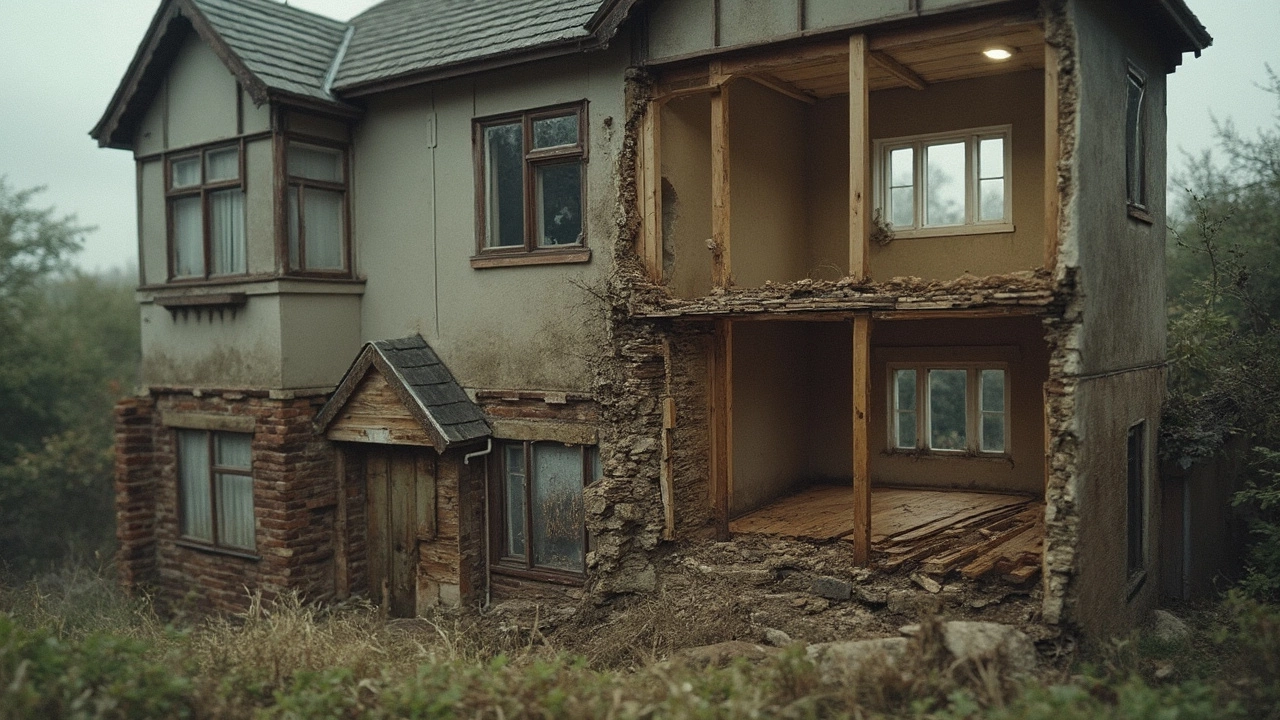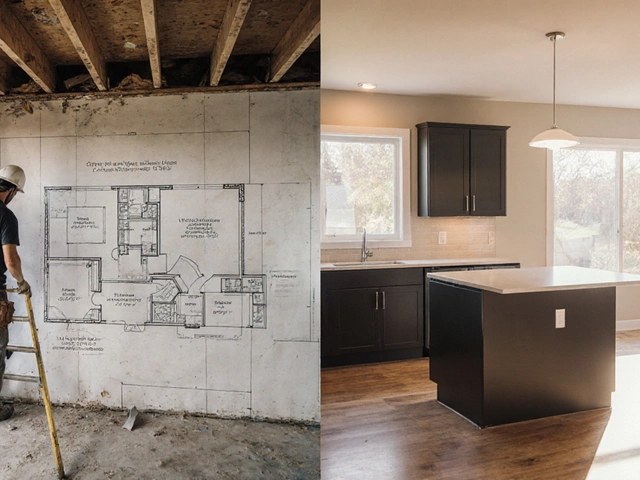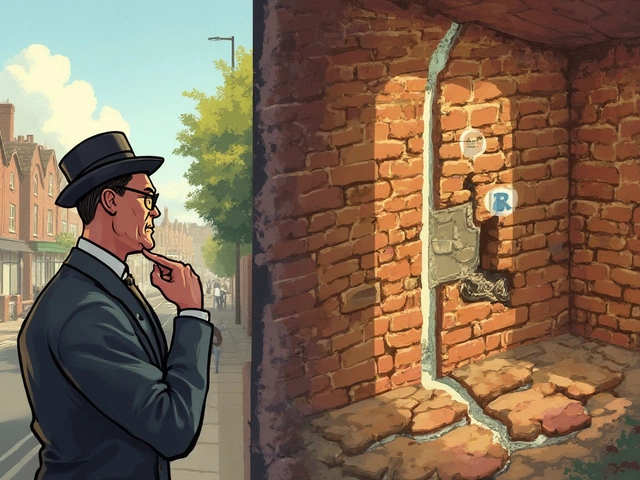Think ignoring that hairline crack in your basement wall is no big deal? A lot of folks do—until the rain pours, water seeps in, and suddenly your spare room smells like a swamp. Foundation cracks don’t fix themselves, and small problems can turn ugly fast.
Here’s the thing: a little crack might look harmless, but it's often the first sign your home is stressed. Skipping repairs can open the door to water damage, mold, rising energy bills, and even doors and windows that won't close right. Waiting too long to handle it just gives those problems a chance to grow.
The cost of putting repairs off stacks up way faster than most people think. What starts as a simple $200 fix can spiral into major structural work, running into the thousands. Plus, that crack could be a red flag to home inspectors and buyers if you ever want to sell.
If you spot any new cracks or notice old ones getting bigger, don’t brush it off. There are ways to spot which cracks are risky and which ones can wait, but leaving them alone is rarely a smart move.
- Why Foundation Cracks Start
- The Snowball Effect of Ignoring Cracks
- How Cracks Damage Your Home
- What You Can Do About It
Why Foundation Cracks Start
Most people are surprised how many things can cause a crack in your foundation. Let's break it down in plain terms. The ground under your house is always on the move. It swells up when it’s wet, shrinks when it’s dry, and even shifts from tree roots or new construction next door. That movement puts stress on your foundation—kind of like bending a credit card back and forth until it snaps.
One of the main reasons you’ll see cracks is water. Too much rain or poorly placed gutters can dump water right next to your house. Over time, that moisture seeps into the soil and causes the ground to expand and contract. When the soil moves, your foundation can’t help but crack under the pressure.
Another biggie is poor drainage. If water can’t escape from around your foundation, it pools against your walls, and eventually, the pressure finds the weak spot—usually in the form of a crack. Homes built on clay-heavy soil have it rougher, since clay swells up more than regular dirt. Even droughts cause trouble. When the ground dries up, it shrinks and pulls away from the foundation, leaving gaps that can lead to cracks.
- Tree roots steal moisture from soil, causing it to shift unexpectedly.
- Construction vibrations from heavy equipment can disturb the ground.
- Faulty construction—skipping rebar or using poor quality concrete—makes cracks likelier and faster.
Check out what the numbers look like when different causes kick in:
| Cause | How Common | Risk Level |
|---|---|---|
| Poor Drainage | 70% of foundation issues | High |
| Soil Movement (expansive soil) | 60% of homes in US built on it | High |
| Faulty Construction | Up to 25% of new homes | Medium |
| Tree Roots | Common if trees are 30ft away or closer | Medium |
Spotting why a crack happened is actually a huge deal for fixing it right. If you know the trigger, fixing just the crack won’t cut it; you need to deal with the cause too. If you ignore a foundation crack, you're not just patching a cosmetic flaw—you're letting a bigger problem fester.
The Snowball Effect of Ignoring Cracks
Here’s where a small foundation crack can start making a mess of things. Once you ignore it, that crack offers a direct path for water during rainstorms, so your basement or crawl space can start getting damp. According to experts, even tiny foundation cracks as narrow as 1/16 inch have been known to let in enough moisture to spark mold growth behind drywall within just a handful of weeks.
That’s not just gross—it’s expensive. Water intrusion is one of those silent problems that move fast. With moisture comes wood rot, ruined insulation, and a perfect breeding ground for pests like termites and carpenter ants. All of this can happen before you even realize what’s wrong behind the walls or beneath the floors.
The trouble doesn’t stop with water. The crack itself usually gets worse over time, especially if your area freezes during winter. Water seeps in, freezes, and expands—suddenly that little crack widens or spreads. What was a simple patch job can now include major repairs to walls, floors, or even your whole foundation.
Then there’s the “creepy” stuff nobody wants to deal with: the musty smells, warped doors, cracked tiles, and in the worst cases, bowing walls or uneven floors. At that point, you’re not talking about a weekend fix—it’s weeks or months of disruption and a big bill.
- Water seeping through cracks is the leading cause of basement flood insurance claims.
- Households that ignored cracks for more than a year often end up spending five to ten times more on repairs, based on industry surveys.
- Unchecked cracks can even drop your home’s value by up to 20%, since buyers and inspectors see them as a sign of big trouble ahead.
The snowball effect is real—acting early always beats letting things slide.

How Cracks Damage Your Home
You might see a tiny fracture in your basement wall and think it's harmless, but it can lead to a full lineup of headaches. A crack in your foundation is like a weak spot in a ship—water, pests, and even shifting soil can force their way in over time. And these don’t just stay in the basement. The impact travels all the way through your house.
Here's what you’re really risking when you ignore a foundation crack:
- Water Leakage: Water finds its way through even the smallest crack, especially after a heavy rain. Moisture in the basement can ruin drywall, rot wooden beams, and make carpet stink. According to the American Society of Home Inspectors, around 60% of U.S. homes have some type of water intrusion or dampness in the basement—that’s a lot of soaked storage boxes and warped flooring.
- Mold and Mildew: When water seeps in, mold isn’t far behind. Mold spores only need 24-48 hours of moisture to start growing. Not only does it wreck your stuff, but it can bother your allergies or breathing, especially in kids and older adults.
- Structural Problems: Sooner or later, cracks can mess with the actual structure. Walls might bow toward the outside, floors get uneven, or doors won’t shut. You’ll feel it walking around your house—those creaks and shifts aren’t just annoying, they’re signs things could get worse. A cracked foundation can drop your home’s value by up to 15% if left untreated, according to a HomeLight study from 2023.
- Increased Energy Bills: Small openings let outside air in and indoor air out. Your furnace or air conditioner has to work harder to keep things comfortable, which you’ll definitely notice in your monthly bill.
- Pests: Bugs and rodents love a good crack. Give them an opening, and they’ll move in, hunting for warmth and food. Some ants and termites even chew into the wood near cracked spots, causing even more damage.
If you’re curious about how much these issues can cost, check out this quick breakdown:
| Issue | Possible Cost Range (USD) |
|---|---|
| Water Damage & Mold Remediation | $1,200 - $6,000 |
| Foundation Structural Repairs | $4,000 - $25,000 |
| Energy Loss (extra per year) | $300 - $700 |
| Pest Extermination | $200 - $1,000 |
Ignoring a foundation crack just lets all these problems build up over time. If you catch it early, fixes are quick and affordable. Waiting could mean dealing with nasty surprises and a lot of extra expense down the line.
What You Can Do About It
Spotting a crack in your foundation isn’t the end of the world, but you do need to act. The smart move? Get proactive and deal with it before it turns into a money pit.
First, size matters. If the crack is less than 1/8 inch wide and not growing, it’s probably just a cosmetic issue. But if you see it getting longer, wider, or branching, don’t mess around—call a professional for an assessment. Here’s how you can handle things, step by step:
- Check the crack: Measure and monitor it over a few weeks. Snap some pictures with your phone to compare changes.
- Look for water: Is moisture getting through? If yes, you’ll want to seal the area ASAP, even as a short-term fix.
- Seal minor cracks: For hairline cracks, a concrete caulk or epoxy injection kit from the hardware store can do the job. Just follow the directions closely.
- Call a pro for bigger issues: Foundation repair experts have tools like crack monitors and moisture meters. They can spot issues you might miss and offer real solutions.
If water’s already sneaking in, think about your gutters and grading. Make sure downspouts carry water away from the base of your home, and the soil slopes away—not towards—the foundation.
Don’t forget about the impact on your wallet. Here’s a quick look at repair costs based on known 2024 rates:
| Repair Type | Average Cost (USD) |
|---|---|
| Crack Sealing (Do-It-Yourself) | $100 - $300 |
| Professional Crack Injection | $350 - $800 |
| Waterproofing | $2,000 - $6,000 |
| Major Structural Repair | $5,000 - $15,000+ |
The earlier you jump on a foundation crack, the less you’ll usually pay. Even if it means paying for an inspection, you’ll save yourself piles of cash and stress later.
If you’re ever unsure, don’t chance it. Foundation pros often offer free or cheap inspections, and they can tell you if it’s a quick fix or something bigger. Either way, a little effort now beats a massive headache later.







